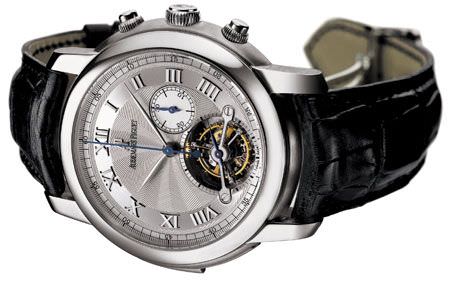The height of the movement of this triple complication is quite reasonable, with its 7.65 mm thickness. The constructors and master watchmakers at the manufacture in Le Brassus had to innovate in order get sufficient space to put all of these devices. The tourbillon and the minute repeater system were placed at the same level against the dial. Because the gongs are located at the back of the case, it was necessary to lengthen the rods in order to activate the chime. This same inversion is found with the chronograph mechanism, also located at the rear of the case: the axes of the seconds hand and the minute counter traverse the entire movement right up to the hands of the dial, passing through the cut-out part of the minute repeater. In all, 665 component parts make up this mechanism.

Mechanical prowess
On a quest for better sound quality, the watchmakers at Audemars Piguet have also made innovations in the system used for the strike. Contrary to classical systems, the hammer does not freely strike the gong. The rod that carries it first hits a banking pin. This rod is both rigid enough to support this action but sufficiently supple to allow the hammer to move back immediately from the gong once it is struck, thus giving the sound a better resonance.
Moreover, because the space is so crowded, the watchmakers had to design a tourbillon carriage with smaller than normal dimensions, without however, changing the intan-gible diameter of the balance. Add on the precise chronograph mechanism, and you have a – small – idea of the complexity of the piece. It takes a month just to assemble, encase and adjust the timepiece.
The refined finishing of the movement (rho-dium-plating, circular-graining, and Côtes de Genève decoration) is visible through the transparent sapphire crystal caseback of the 18 carat pink gold or platinum case.
Source: Europa Star April-May 2006 Magazine Issue





